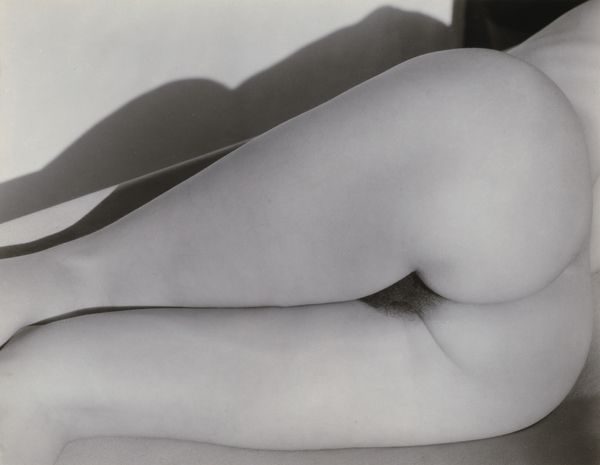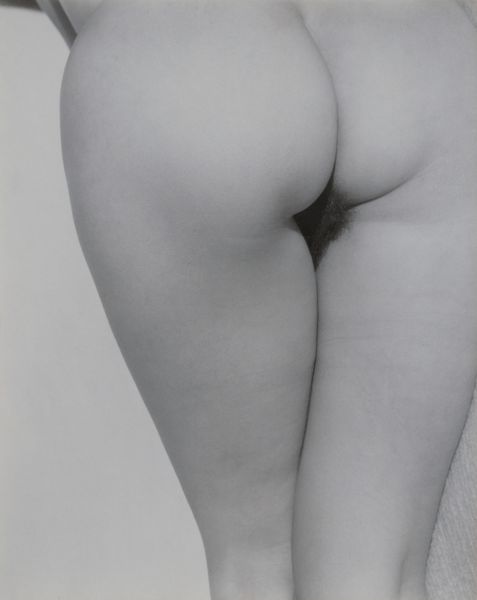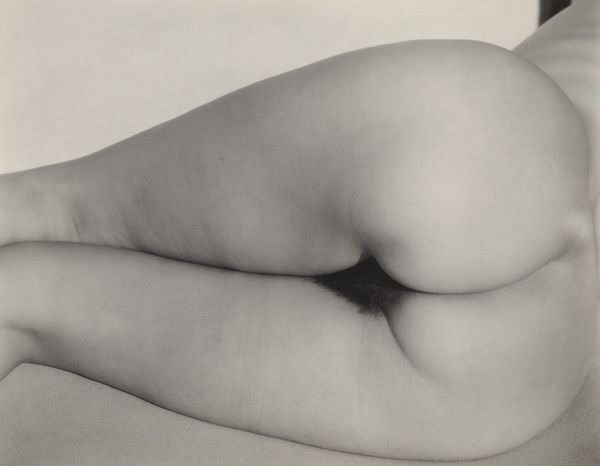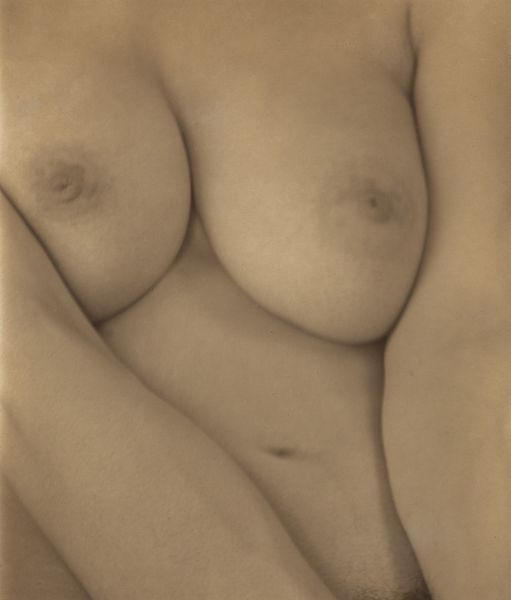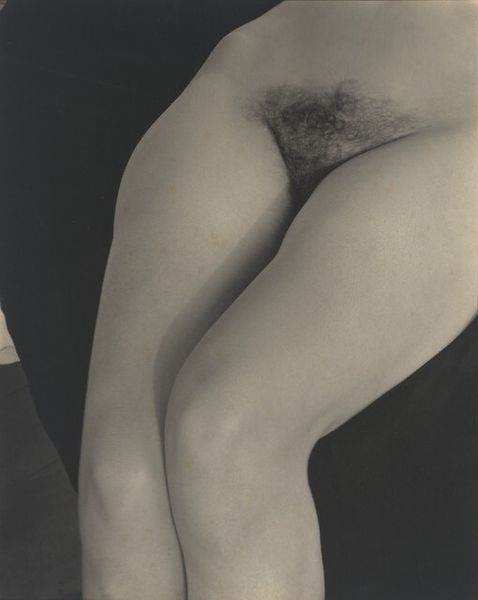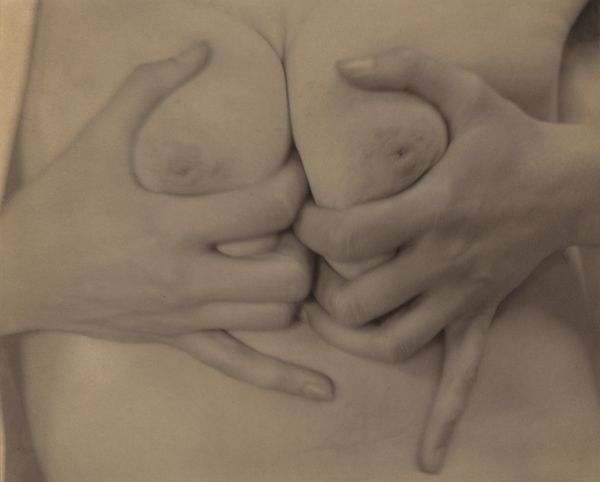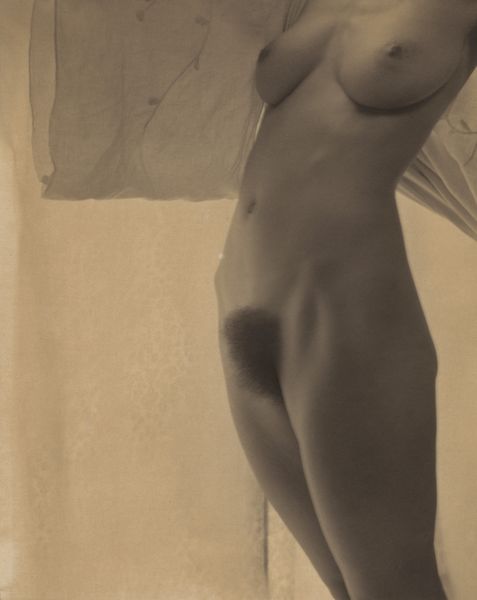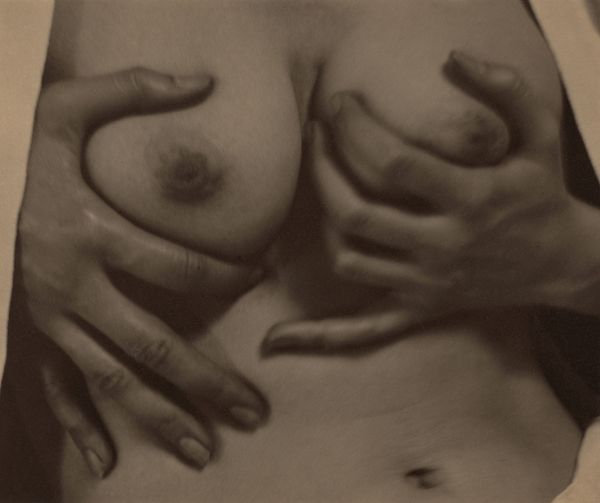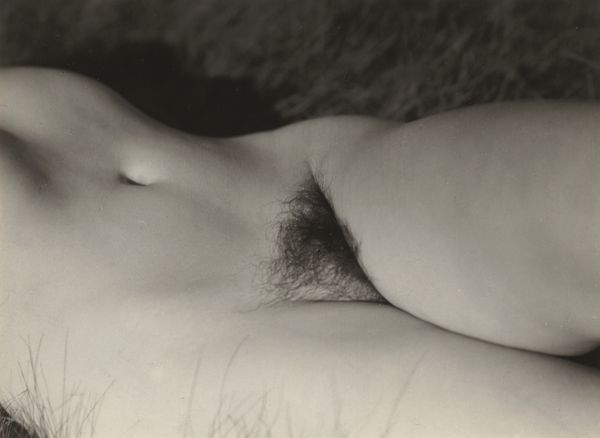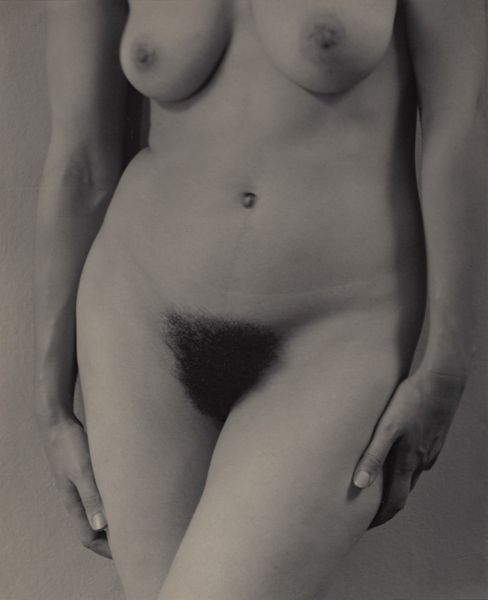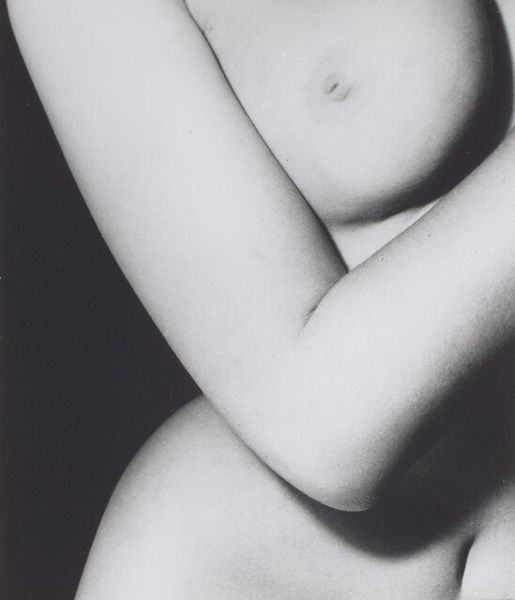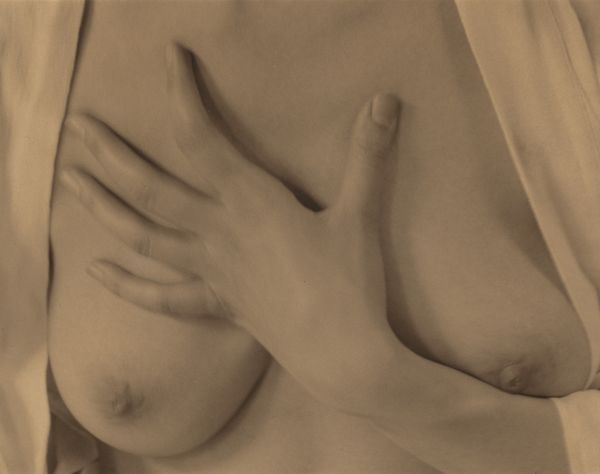
photography
#
portrait
#
pictorialism
#
sculpture
#
photography
#
nude
#
modernism
#
erotic-art
Dimensions: sheet (trimmed to image): 23.8 x 16.7 cm (9 3/8 x 6 9/16 in.) mount: 50.6 x 38.5 cm (19 15/16 x 15 3/16 in.)
Copyright: National Gallery of Art: CC0 1.0
Editor: This is Alfred Stieglitz’s "Georgia O'Keeffe—Torso," taken in 1931. It's a black and white photograph focusing on, well, O'Keeffe’s… posterior. It’s very sculptural in how it presents the human form. How do you interpret this work? Curator: As a materialist, I’m drawn to considering photography not just as representation, but as a product. Think about the materials involved: the photographic paper, the developing chemicals, the labor in the darkroom. The image isn’t just *of* O'Keeffe; it *is* something made, a crafted object subject to the same market forces as any other commodity. How does the presentation – the framing, the printing – contribute to that objectification? Editor: So you're saying we should consider the means of production in understanding the artwork's meaning? Curator: Precisely! Stieglitz was deeply invested in establishing photography as "high art," and he used his resources and his relationship with O’Keeffe to do that. The platinum prints he was known for were labor intensive, requiring rare and costly materials, unlike more populist snapshots or commercial prints. This elevated the image, not just conceptually, but materially. Who had access to this art? How was it displayed? That's crucial to understanding its significance. Editor: I see your point about how materials influence perception. It's easy to overlook the physical work and the cost of production. Curator: Consider the act of making itself. Every decision by the photographer, from composition to developing time, reflects the means of production and affects meaning. The way that human body is treated – its smooth surface, its texture as perceived through that process - emphasizes its consumable qualities, blurring the line between artistic expression and, in its own time and ours, the commerce that determines its significance. Editor: It reframes my perspective of this work entirely. I always looked at it through a biographical or art-historical lens, but thinking about the materiality gives it another layer of complexity. Thanks! Curator: It makes us think about value – artistic, economic, cultural – and who determines that value in the first place. It’s all intertwined, the artistic vision, the material realities, and the market’s power.
Comments
No comments
Be the first to comment and join the conversation on the ultimate creative platform.
